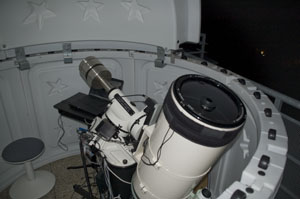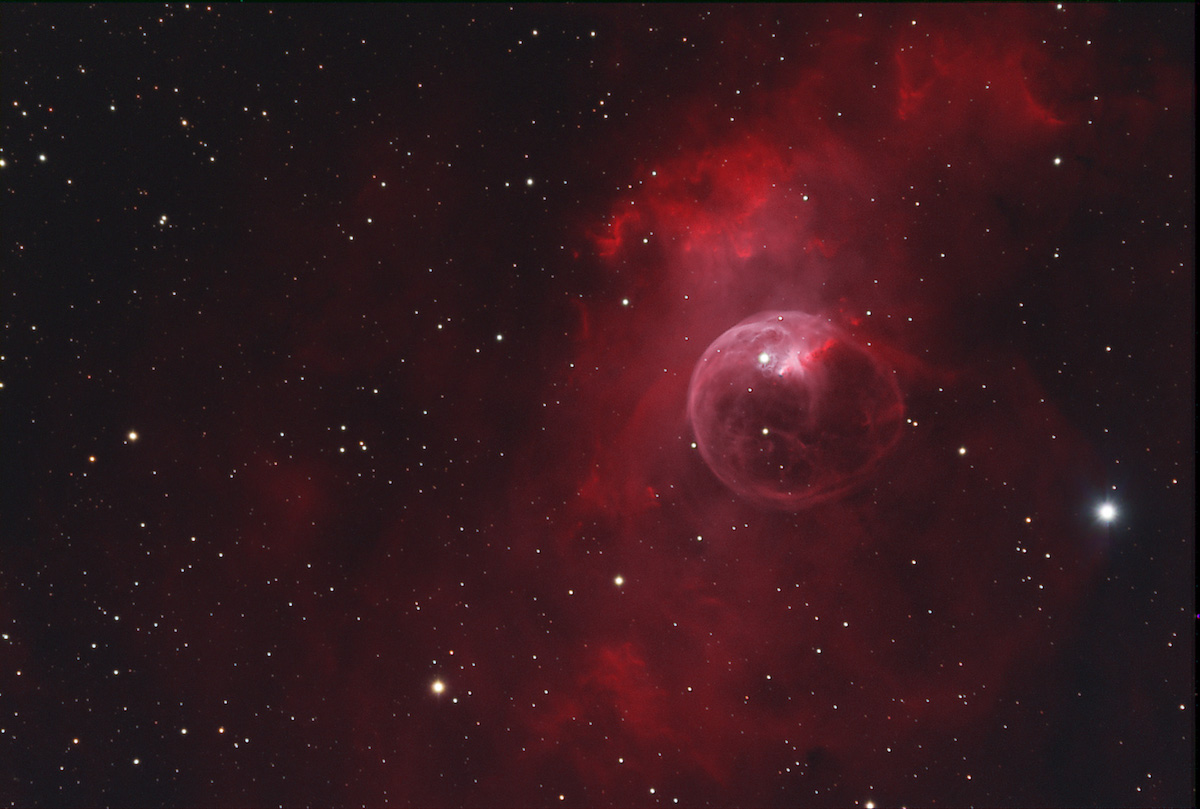NGC 7635
NGC 7635 - Bubble Nebula in Cassiopeia (Sharpless 162, LBN 548, Caldwell 11)
The Bubble Nebula is an ionized hydrogen emission nebula 7,800 light years away, created by stellar winds from the Wolf-Rayet O-type star SAO 20575. There are only about 200 Wolf-Rayet stars known in our Galaxy. These stars are unusual for their hot surface and very high velocity stellar winds ejecting gas from the upper atmosphere into outer space. The Bubble's Wolf-Rayet star is approximately 45 times more massive than our Sun and is the source for the ionization of the hydrogen. It is the nebula's "central" star, although the star appears displaced from it's geometric center.
The Nebula is a part of a larger emission complex named Sharpless 162, located in the Perseus arm of our Galaxy. There is a remarkable arcade of bright emission knots appearing West to the central star, usually referred to as "cometary", as well as a bright emission loop "touching" the star. The Bubble Nebula is estimated about 300,000 to 400,000 years old.
The Bubble Nebula was discovered in 1787 by Sir William Herschel. It's study is important to the understanding of young high-mass stars that are precursors to supernovae. It is also useful in understanding the effect of stellar wind driven shocks in the interstellar medium.
| Image Type: | Narrowband + RGB | Constellation: | Cassiopeia |
| Telescope: | 10" Aries f/15 Maksutov-Cassegrain on Astro-Physics 900GTO German Equatorial | Object: | Emission Nebula |
| Focal Length: | 2692mm | Distance: | 7,800 light years |
| Resolution: | 0.52"/pixel at full size | Dimensions: | 15' x 8' |
| Accessories: | Moravian G1-0300 as Off-Axis Guider, 0.67X Astro-Physics CCD Telecompressor | Magnitude: | ~10 (V) |
| CCD: | QSI 532wsg, running at -20 deg. C | ||
| Exposures: | 3nm Narrowband [H II]: 8.25 hours [O III]: 12.75 hours, RGB: 2 hours, Total: 27.5 hours |
 Aries MCT in Malvazinky Observatory |
|
| Filter(s): | Astrodon Narrowband and Tru-Balance E-Series | ||
| Exposure Date: | August 19 to October 3, 2011 | ||
| Location: | Malvazinky Observatory in Prague, Czech Republic | ||
| Seeing, FWHM: | 0.9-1.5" | ||
| Processing Software: | MaximDL, PixInsight, Photoshop | ||
| Image Acquisition Software: | MaximDL, TheSky6, CCDAutoPilot, FocusMax, PinPoint | ||
| Remarks: | Processing method: Debloomed all images in MaximDL 5 PixInsight: [H II] and [O III] Data: RGB Data: Photoshop: |
||
